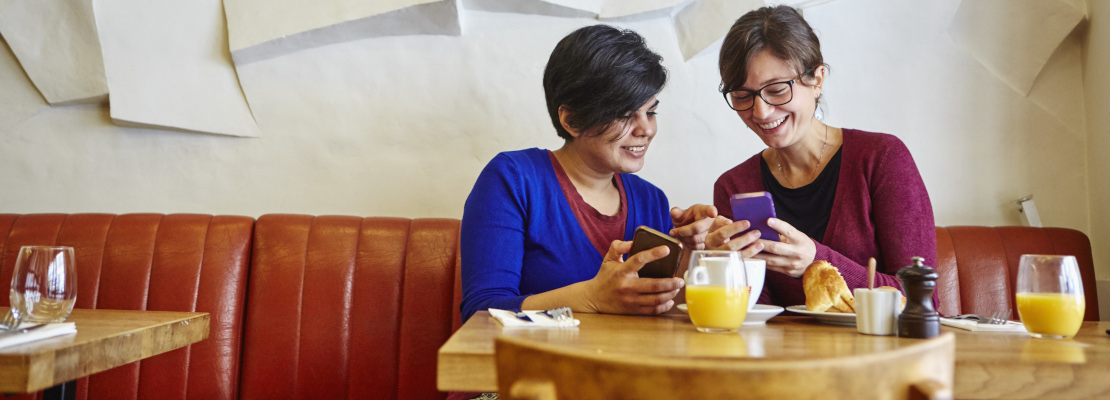Online and mobile banking have made us comfortable in transferring funds, automating paying of bills, providing payments to merchants and gifting money to family and friends. For example, you may have sent a mobile payment to a colleague or family member collecting money for a wedding, baby or bereavement gift, or for their children's school fundraising efforts.
There are a wide range of online and mobile payments services that operate both nationally and internationally. Some services are created by fintech (financial technology) companies, or individual banks, while others are independent service providers that may be supported by networks of banks. While the services differ in the features they offer—some may allow you to easily split a restaurant dinner payment between a group of friends, make purchases, or connect to a debit card (among other options)—they all offer a quick and easy way to move our money around.
Think about the different payment apps and decide which is right for you
All mobile payment apps are not created equal, and you should understand the differences between them. Here are a few of the many types of popular mobile payment apps:
Some mobile payment apps are offered and operated by cellphone manufacturers; these companies also offer a diverse spread of other goods and services, including their phones, their own branded credit cards, and streaming music and videos. The companies providing the apps are not financial institutions, and they must rely on relationships with banks to provide payment and credit card services.
There are third-party, standalone apps that act as a bridge linking your accounts to individuals and companies you want to pay. These companies may also offer debit cards that operate within their app, and some even incorporate a default social media function into the app to share your purchase with other app users. These apps are also not financial institutions, and you'll have to provide them with detailed information on your financial accounts to use their service.
Delta Community offers Zelle®* to our members, which is available in our Mobile App and Online Banking. Hundreds of banks and credit unions in the U.S. also offer Zelle, and more than 140 million people already have access to Zelle in their mobile banking app or by using the Zelle app.
With Zelle, our members don't have to download a separate app; it is already available with your Delta Community Checking or Savings Account. Another feature that makes Zelle unique is that Zelle doesn't need your account info for you to send or receive money. With just an email address or U.S. mobile phone number, you can quickly, safely and easily send and receive money with people you know, regardless of where they bank in the U.S.
Here are some actions you can take that could make your app payments safer:
Only send money to people you know and trust
When you make a mobile payment, it's almost immediate; think of it as giving someone cash. When the payment is made, it’s gone and you wouldn't be able to recover it. Since the payment is fast and not recoverable, requesting a mobile payment is a regular trick of scammers. These scammers will take your money and then won't deliver the service or goods for which you've paid. Therefore, be careful about who you are paying; you should always make mobile payments to family, friends, colleagues and other people that you know and trust.
Have your recipient send you a request for the funds
Having a request for payment come to you first from the payee, along with the payment details—such as the amount—ensures you have accurate information and that your payment will go to the right person. This precaution is especially helpful when you are sending a first-time payment. You also need to make certain the recipient is using the same app or payment service as you.
Ready, check, check again carefully—and then send money
If you type in the wrong name, email address, phone number or payment amount, then you might send money to the wrong person and/or send the wrong amount. Always double check details—name, amount of money, email address or phone number before sending.
Set up your app to require two-factor identification
Most apps have multiple safeguards built in by default to prevent someone that's not you from accessing your account and transferring money. If your app doesn't automatically require some method of additional authentication, such as a Personal Identification Number (PIN), a passcode (usually a set of numbers that might be texted to you), or a fingerprint, then make sure to set up two-factor identification (also called multi-factor identification) immediately. By doing this you have extra security if your phone is lost or stolen—and if it is, then immediately notify the credit union, bank, or other holder of your accounts connected to the app.
Remember to be cautious and safe when making online payments
Mobile payments have great benefits; they're easy, fast and efficient, but remember to be cautious when making them. The U.S. Consumer Financial Protection Bureau and the Federal Trade Commission (“FTC”) offer good, practical advice on making safer mobile payments.
*Terms and conditions apply. Zelle and the Zelle related marks are wholly owned by Early Warning Services, LLC and are used herein under license.



